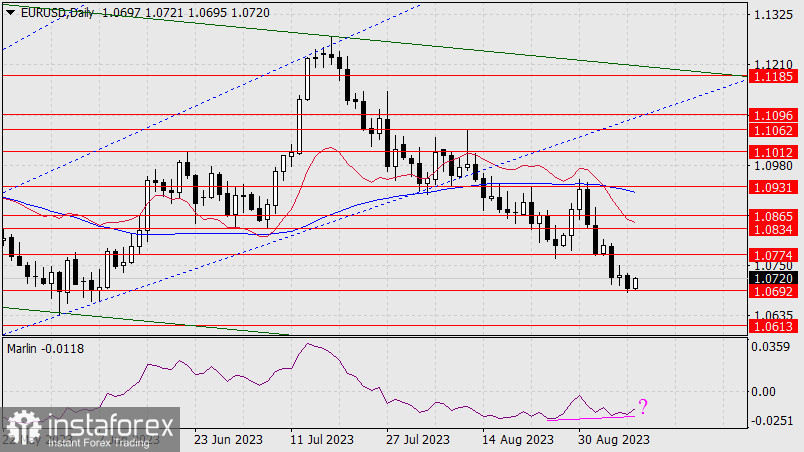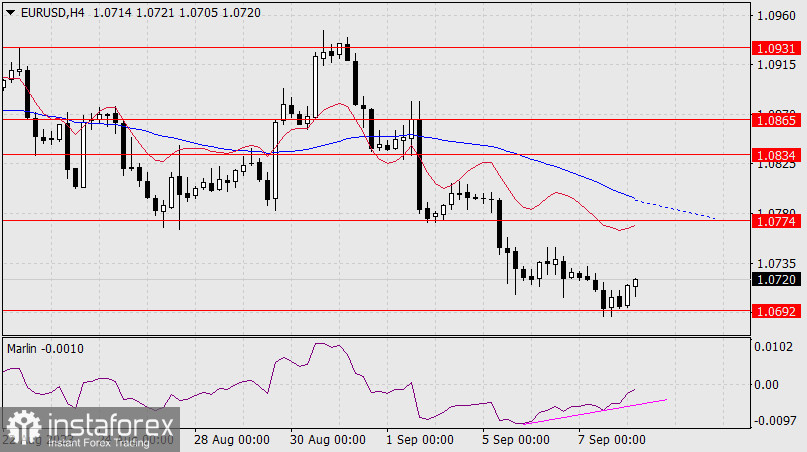EUR/USD
On Thursday, the euro dipped a bit further and reached the target level of 1.0692. The convergence between the price and the Marlin oscillator on the daily chart is getting stronger and becoming more pronounced.

Now, the main concern is on inflation figures in China and the US, which is related to the global inflation issue. This is because a spike in oil prices is preventing a significant decline in inflation. There is talk about a stagflation looming over the world. Investors will pay attention to China's CPI figures, to be released on Saturday, and the main event will be the US inflation data for August on Wednesday.
It's possible that oil prices have not yet been included in the CPI (although they have already affected producer prices), in which case it may create the impression that concerns about stagflation are exaggerated. Today, for instance, the forecast for Germany's CPI is a drop from 6.2% YoY to 6.1% YoY. As a result, the dollar may weaken and we might see a corrective growth in the euro. This could persist until the next Federal Reserve meeting.

On the 4-hour chart, the price and the oscillator have formed a convergence. The euro started to rapidly rise, and we have all the conditions for the pair to reach the first target at 1.0774. The MACD indicator line is approaching this level. Overcoming it may provide additional strength for the upward movement.

Let's also take a look at the weekly chart. The pair has continued to fall for the eighth consecutive week, and the current candle is on the 5th Fibonacci timeline. Two scenarios are possible: either it continues to fall for another 2-3 candles (making it 11 candles in total), or the next candle and the following ones (up to the 6th line) will be white.
 English
English 
 Русский
Русский Bahasa Indonesia
Bahasa Indonesia Bahasa Malay
Bahasa Malay ไทย
ไทย Español
Español Deutsch
Deutsch Български
Български Français
Français Tiếng Việt
Tiếng Việt 中文
中文 বাংলা
বাংলা हिन्दी
हिन्दी Čeština
Čeština Українська
Українська Română
Română

